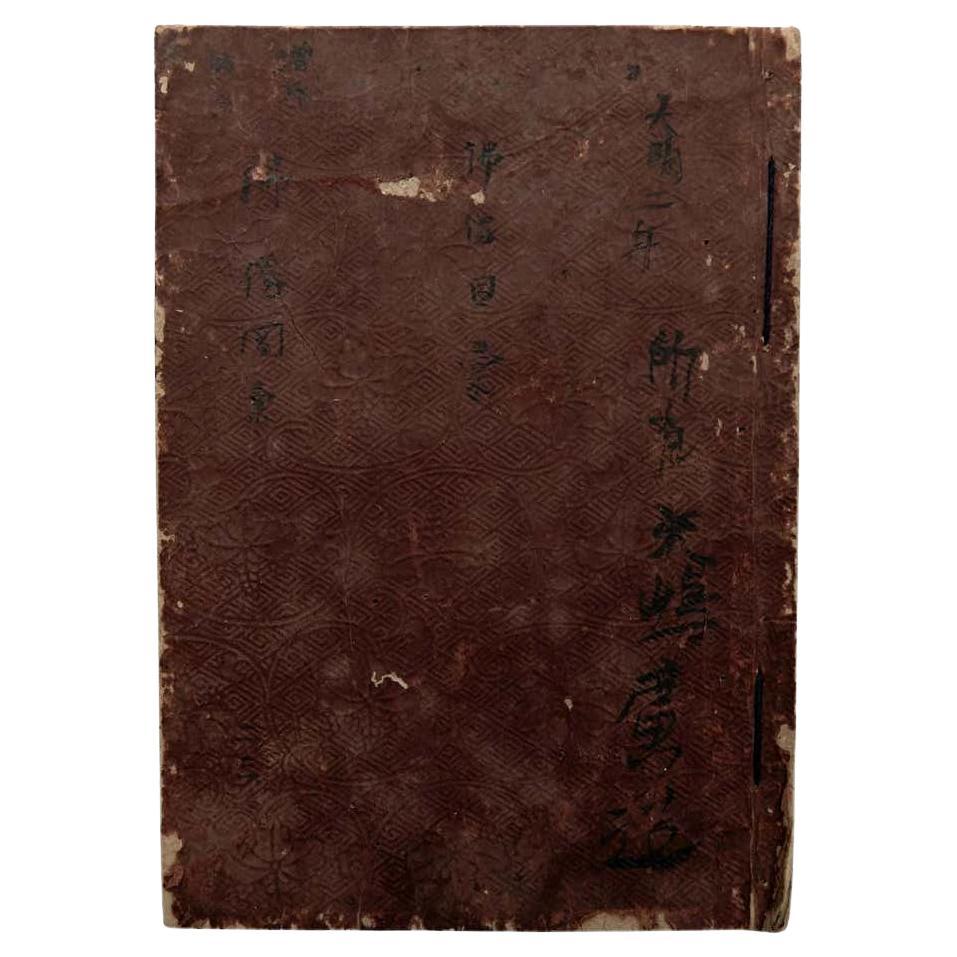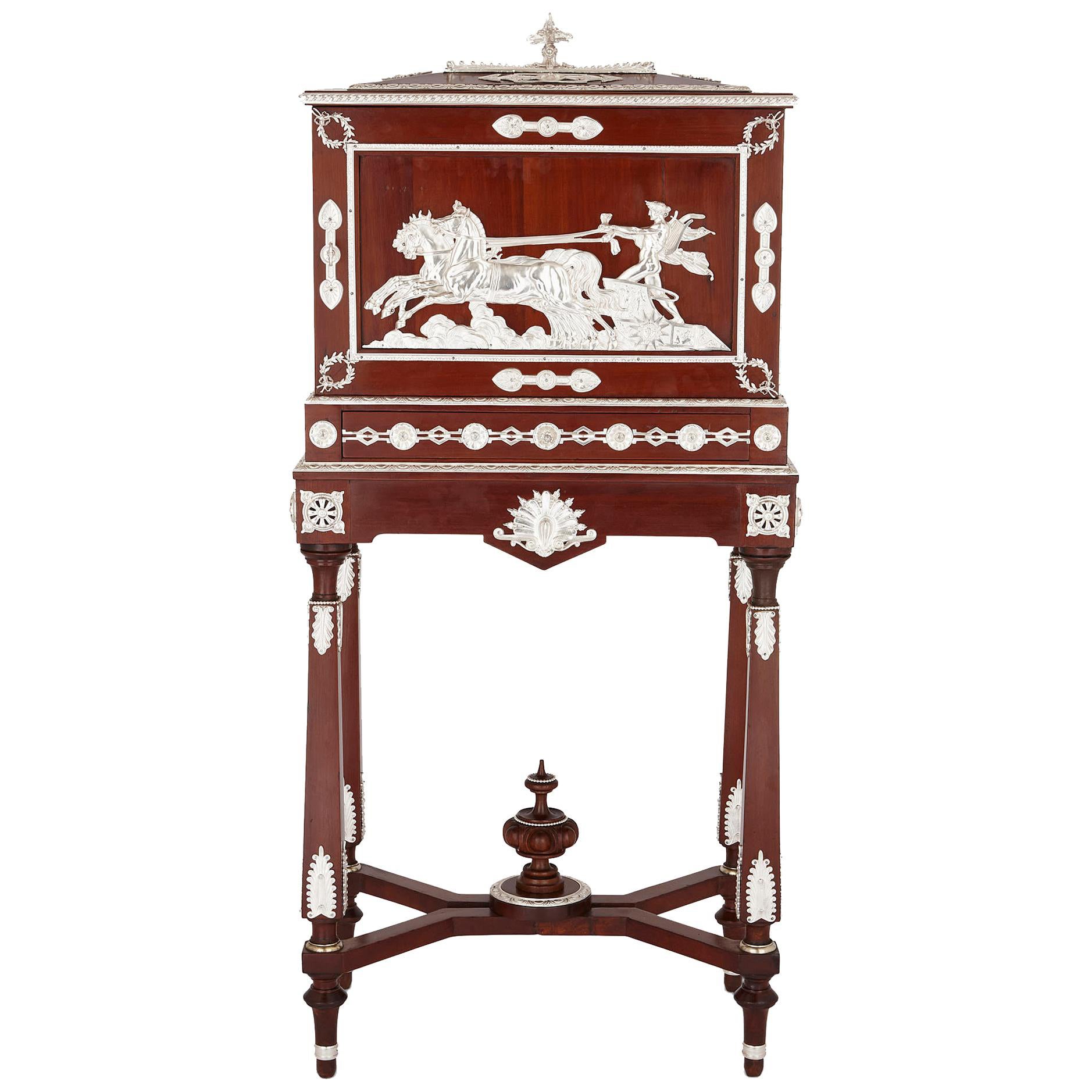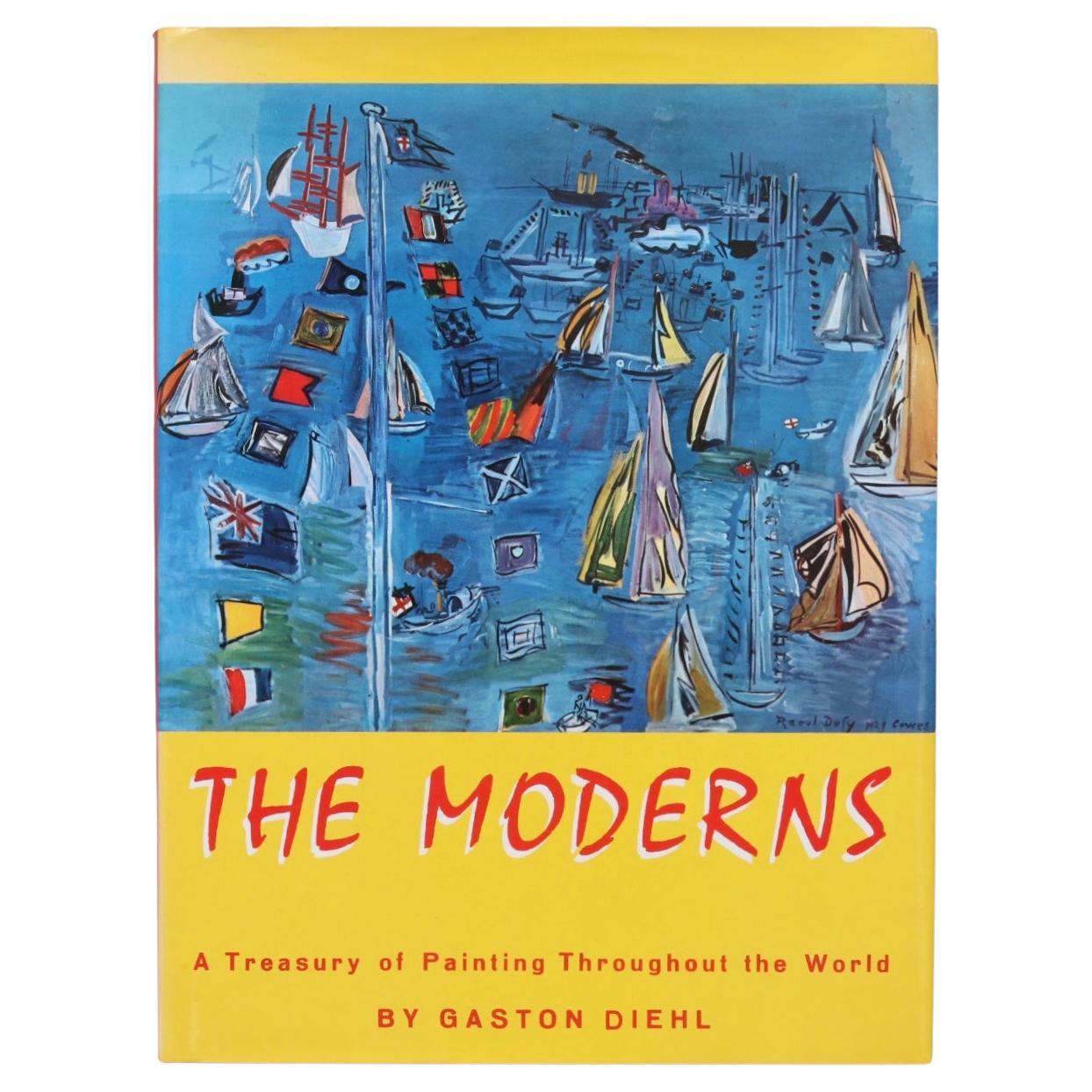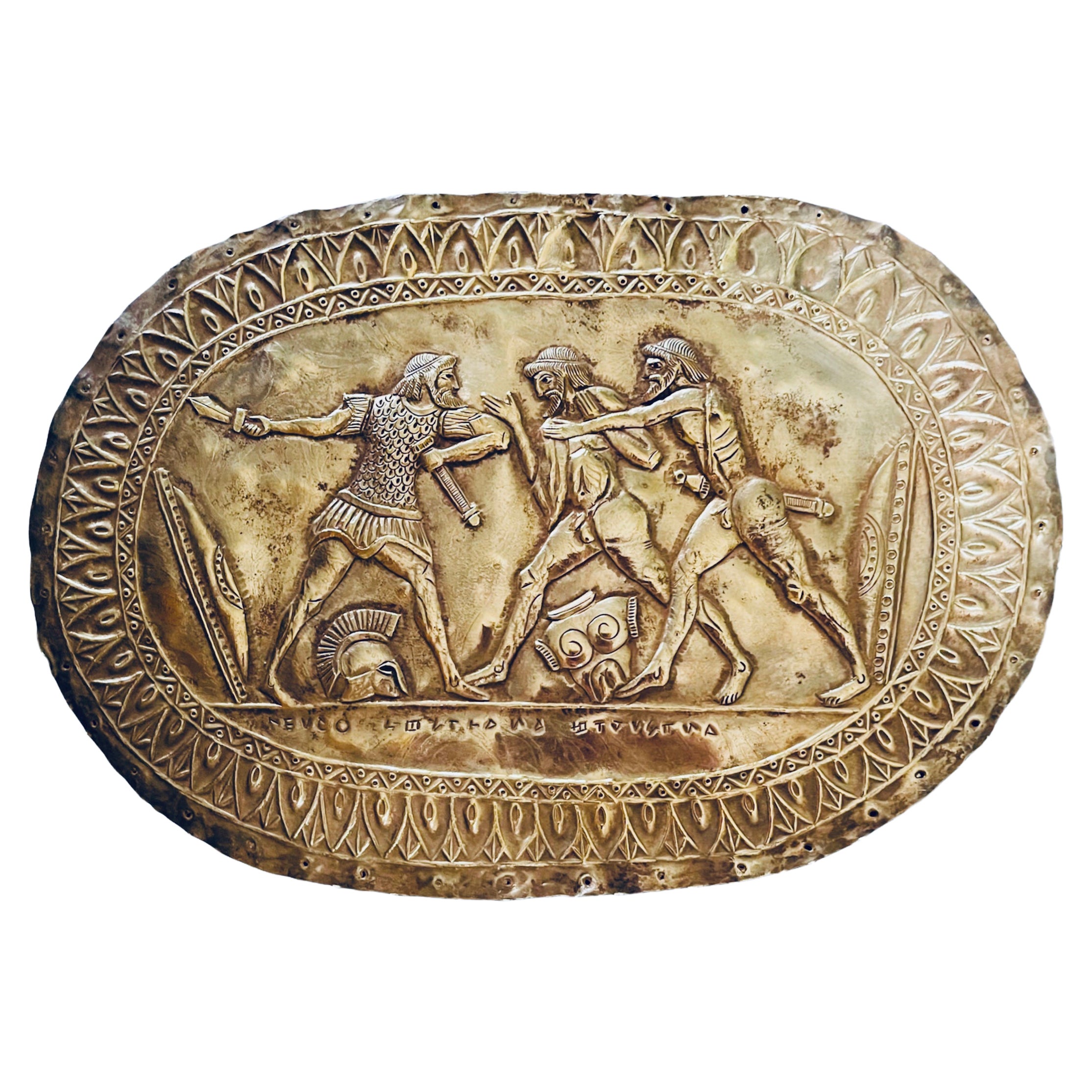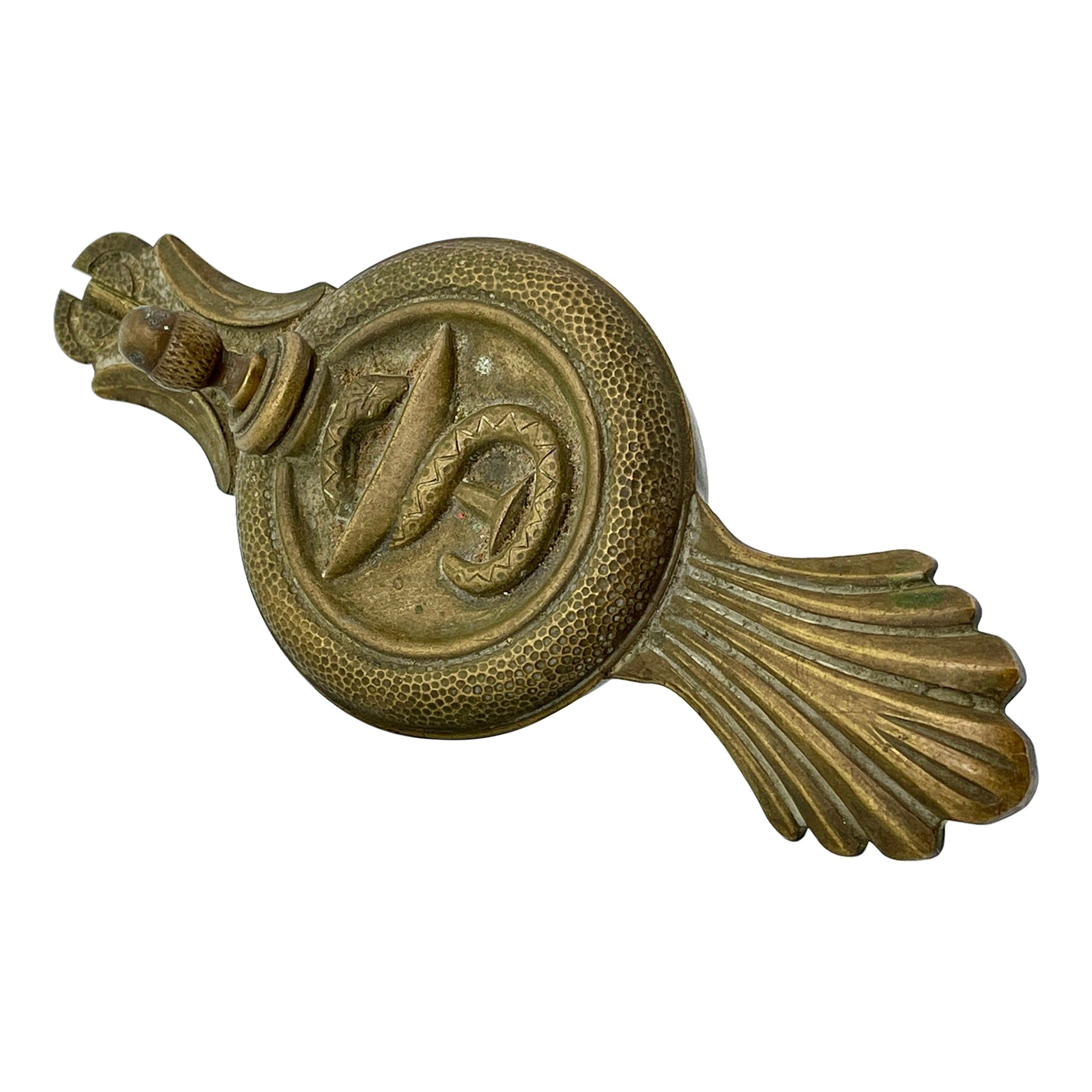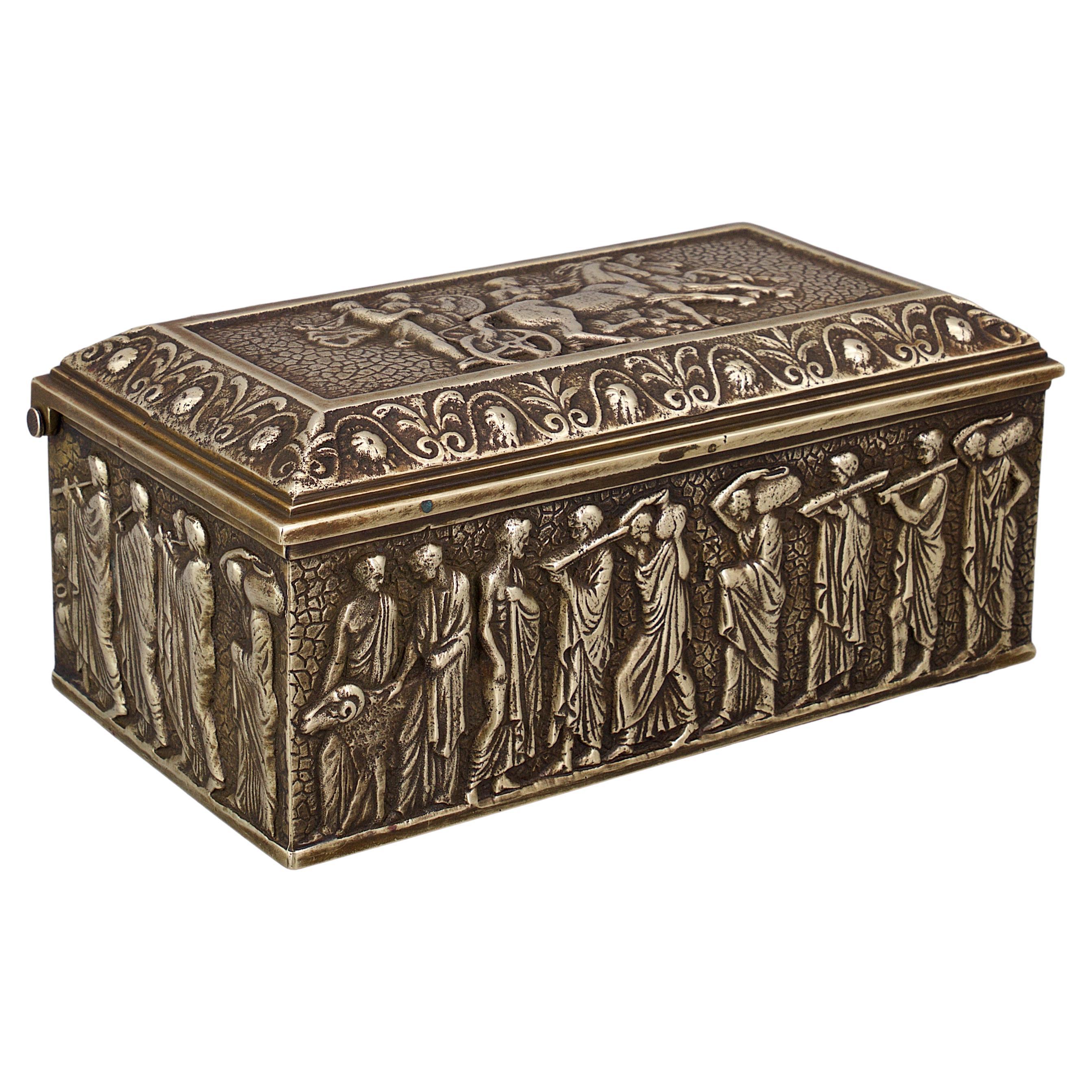Neo-Greek Cigar Cellarette, C.G. Diehl, E. Frémiet & J. Brandely, Circa 1867
Acerca del artículo
- Creador:
- Dimensiones:Altura: 124 cm (48,82 in)Anchura: 55 cm (21,66 in)Profundidad: 42 cm (16,54 in)
- Estilo:Renacimiento griego (En el estilo de)
- Materiales y técnicas:
- Lugar de origen:
- Época:
- Fecha de fabricación:circa 1867
- Estado:Desgaste acorde con la edad y el uso.
- Ubicación del vendedor:PARIS, FR
- Número de referencia:
Charles-Guillaume Diehl
Charles-Guillaume Diehl fundó su empresa de ebanistería y decoración en el número 19 de la calle Michel-Le-Comte en 1885. Sus talleres producían elegantes muebles de palisandro y tuya y novedades con adornos de bronce y porcelana. Sin embargo, fueron sus cajas de lujo (licoreras, armarios para puros, cajas de juegos, estuches de cachemira, joyeros) las que aseguraron el renombre de Diehl. Ya recompensado con una medalla de bronce en la Exposición Universal de 1855 en París, expuso una jardinera con columnas de porcelana y un mueble para licores en la Exposición de Artes Industriales de 1861. En colaboración con el diseñador Jean Brandely (en activo desde 1867 hasta 1873), Diehl renovó su repertorio decorativo y creó asombrosos muebles de estilo greco, que tuvieron un éxito fulgurante en la Exposición Universal de París de 1867, donde sus armarios obtuvieron también una medalla de plata. Algunos motivos eran tan típicos de la obra de Diehl que fueron ampliamente comentados por el crítico de arte J. Mesnard en su libro "Les Merveilles de l'Exposition Universal de 1867". Escribe sobre una mesa en la que "el colgante con ganchos y el motivo radiante en forma de abanico que adorna el entablamento están grabados con amor" y un joyero en el que "la cabeza de fino estilo griego constituye la parte esencial de la fina ornamentación de bronce dorado". Para esta Exposición Universal, Diehl también se asoció con dos famosos escultores: Emile Guillemin (1841-1907), que esculpió el relieve de un aparador de caoba con bronces dorados galvánicos, y Emmanuel Frémiet (1824-1910), que ejecutó el bajo relieve de un medallero de cedro con marquetería y bronces plateados. Diehl fue recompensado de nuevo con una medalla de honor en la Exposición Central de la Unión de 1869 y con una medalla de progreso en la Exposición Universal de Viena de 1873. Colmado de elogios por parte de la crítica, Diehl está considerado uno de los artistas más innovadores del siglo XIX. Su última aparición fue en la Exposición Universal de París de 1878, donde presentó fuera de concurso sus creaciones más recientes, entre ellas una mesa de trabajo en marquetería, que con su motivo naturalista de saltamontes anticipaba el Art Nouveau.
Emmanuel Fremiet
- EnvíoRecuperando presupuesto…Se envía desde: PARIS, Francia
- Política de devoluciónLa devolución de este artículo puede iniciarse pasados 7 días del plazo de entrega.
- Tintero neogriego de C.G. Diehl, E. Frémiet y J. Brandely, Francia, circa 1867Por Jean Brandely, Emmanuel Fremiet, Charles-Guillaume DiehlFirmado Diehl à Paris. Tintero de madera y cobre plateado. Cajón central ornamentado con un escudo y flanqueado por dos pequeños cajones laterales que forman dos recipientes, rema...Categoría
Antiguo, Década de 1860, Francés, Renacimiento griego, Tinteros
MaterialesCobre
- Pareja de pedestales neogriegos. C.G. Diehl & J.Brandely, Francia, hacia 1867Por Lebeuf Milliet & Cie Creil Montereau, Jean Brandely, Charles-Guillaume DiehlExcepcional pareja de pedestales de estilo neogriego, realizados en madera de peral ennegrecida, bronce galvánico dorado y loza vidriada. El fuste en forma de vaina está decorado con...Categoría
Antiguo, Década de 1860, Francés, Renacimiento griego, Pedestales
MaterialesBronce
- Preciosa jardinera neogriega atribuida a C-G Diehl, Francia, circa 1870Por Charles-Guillaume DiehlMacetero circular con doble bandeja unida por un trípode negro atribuido a C-G Diehl. Marquetería de madera con encanto. Un hermoso adorno de bronce dorado completa esta pieza. Char...Categoría
Antiguo, Década de 1870, Francés, Renacimiento griego, Jardineras y macetas
MaterialesBronce
- Fino juego de relojes neogriegos de H. Houdebine, Francia, circa 1867Por Henri HoudebineEsfera firmada H. H. Houdebine, Fabricante de Bronces, Rue de Turenne 64, París y reloj firmado Japy Frères & Cie - Médaille d'Honneur Fino conjunto de reloj de estilo neogriego com...Categoría
Antiguo, Década de 1860, Francés, Renacimiento griego, Relojes de mesa y...
MaterialesBronce
- Gueridón neogriego atribuido a F. Barbedienne, Francia, circa 1880Por Ferdinand Barbedienne, Louis-Constant SevinUn modelo similar fue expuesto en la Exposición Universal de París de 1889 ( ver foto adjunta). Gueridón de bronce patinado y dorado con cuatro patas unidas por tallos en forma de X...Categoría
Antiguo, Década de 1880, Francés, Renacimiento griego, Mesas de centro
MaterialesMármol, Bronce
- Pareja de morillos neogriegos de F. Barbedienne, Francia, circa 1870Por Ferdinand BarbedienneMedidas: Altura: 47 cm; Anchura: de 70 a 96 cm; Profundidad: 6 cm. Raro par de morillos de forma cuadrada, realizados en bronce dorado y esmalte policromado " champlevé ". Diseñad...Categoría
Antiguo, Década de 1870, Francés, Renacimiento griego, Herramientas para...
MaterialesBronce, Esmalte
- Antigua Tabaquera de Roble y Bronce Plateado de la Época de Napoleón III por DiehlPor Charles-Guillaume DiehlFabricado por el aclamado ebanista Charles-Guillaume Diehl (1811-1885), este armario tabaquero (humidor) es una pieza exquisita de mobiliario antiguo de roble. Diehl fue famoso en el...Categoría
Antiguo, Fines del siglo XIX, Francés, Neoclásico, Gabinetes
MaterialesBronce
- Modernos de Gaston DiehlLos Modernos de Gaston Diehl, un tesoro de la pintura de todo el mundo. Libro de tapa dura con sobrecubierta. Primera edición publicada en 1978 por Crown Publishers, Inc. de Nueva Yo...Categoría
Vintage, Década de 1970, Italiano, Libros
MaterialesPapel
- Gran placa ovalada de metal repujado de estilo griegoSe trata de una gran placa ovalada de metal repoussé de estilo griego que representa una escena de un guerrero espartano que intenta defenderse de dos guerreros desnudos de otra trib...Categoría
siglo XX, Griego, Renacimiento griego, Recuerdos históricos
MaterialesMetal
- Antiguo Libro de Budismo Japonés Periodo Edo, hacia 1867Antiguo libro de budismo japonés Período Edo, hacia 1867 Libro impreso en negro madera Dimensiones del libro: 226 mm x 159 mm Hay daños porque es un artículo antiguo como most...Categoría
Antiguo, Década de 1860, Japonés, Edo, Libros
MaterialesPapel
- 1930 Encendedor de Bronce Siegfried DDD Pisapapeles de Vidrio de Martini Serpiente HygieiaCerradero/encendedor de bronce pesado con serpiente sobre copa de martini o símbolo hygieia de la salud. Marcado; Siegfried DDD (30) McMXXXVII (1937) No incluye pedernal, por lo qu...Categoría
Vintage, Década de 1930, Estadounidense, Renacimiento griego, Accesorios...
MaterialesBronce
- Joyero de Bronce Antiguo Sarcófago Relieves Griego Romano César GladiadorPor Line VautrinMaravillosa caja de bronce fundido pesado, con bisagras y tapa, ligeramente pulida y brillante. Representan escenas en relieve / personajes de la época romana o griega. No se encontr...Categoría
Vintage, Década de 1920, Italiano, Renacimiento griego, Cajas decorativas
MaterialesBronce
